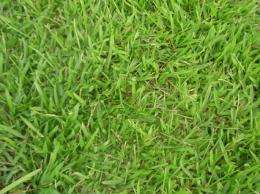
As the planet warms, many native plant communities will be forced to either adapt or migrate to prevent dying off. In this new effort, the researchers looked at many wild grasses that are related to modern crops, such as wheat and rice, and what their chances are of surviving the kind of temperature increases that have been predicted over the next several decades.
More specifically, they looked at prior research done on 236 grass types, noting specifically an ability to adapt to a new niche, then compared the rates they found with temperature increases expected in the places where they now exist up to the year 2070. Alarmingly, they found that on average, global warming is expected to occur approximately 5,000 times faster than the average wild grass community is able to adapt. They noted also that slowly migrating to new places likely will not be an option for most of the grass species studied due to a variety of factors, ranging from limited seed dispersal to geographic obstructions such as mountains, bodies of water or human communities.
Overall, the researchers conclude that past rates of change for niche grasses occurred more slowly than is predicted for environmental changes in the near future, indicating that local extinctions are likely.
The researchers note that the related species humans use as crop foods will not be immune to the same temperature increases, but it is assumed humans will intervene to begin farming in places with more favorable conditions. But there is another problem: Wild grass relatives are still used to improve the crops we grow—they are bred with current crop species to add desired features such as an ability to produce even under drier conditions or to offer a better chance at fighting certain diseases.

 Previous page
Previous page Back to top
Back to top







